Travel & Planning for New Destination Released. Free Shipping to Most Countries Around the World.
Free Shipping to Most Countries Around the World.
Stretching across forty‑five hectares at the very heart of Hamburg, Planten un Blomen is a green sanctuary encircled by shopping boulevards, the city’s congress and exhibition halls, and the vibrant St. Pauli district. Its grounds unfold in a series of distinct landscapes: the fragrant Rosengarten (Rose Garden), the contemplative Japanischer Garten (Japanese Garden), the Große Wallanlagen and Kleine Wallanlagen parks tracing the lines of the old city walls, and the venerable Alter Botanischer Garten (Old Botanical Garden). There is even an expansive open‑air rink where inline skaters glide through warm summer light.
Across this vast park, generous lawns flow between quiet streams and mirror‑still ponds, gently screening out the city’s noise. Whether you are a local seeking a pause from the daily rhythm or a traveler arriving from afar, it is easy to find here a private corner of calm and joy—an island of serenity within the metropolitan tide.
The pavilion reflected on the water was a gift from Hamburg’s sister city, Osaka, Japan. Completed and inaugurated in 1990, it remains one of the very few tea houses in Germany built entirely according to traditional Japanese architectural principles. A meticulously designed Japanese garden surrounds the structure, enfolding it in a hush of elegance. Visitors may wander its paths or take part in an authentic tea ceremony, a ritual refined over centuries that reveals the grace and mindfulness of Japanese tea culture. Performances and opening hours vary with the seasons; on designated days, volunteer hosts and tea masters hold open ceremonies, inviting guests to witness this living art form.
Towering in the distance to the north stands the Heinrich‑Hertz‑Turm, Hamburg’s television tower—an unmistakable white spire and the tallest structure in the city, ranking sixth among Germany’s transmission towers. Like those in many major German cities, it is both landmark and instrument. Named after Hamburg‑born physicist Heinrich Hertz, whose nineteenth‑century experiments proved the existence of electromagnetic waves, the tower still fulfills its original purpose today: sending radio and television signals across the skyline, a modern echo of the discoveries that first made invisible waves tangible to humankind.
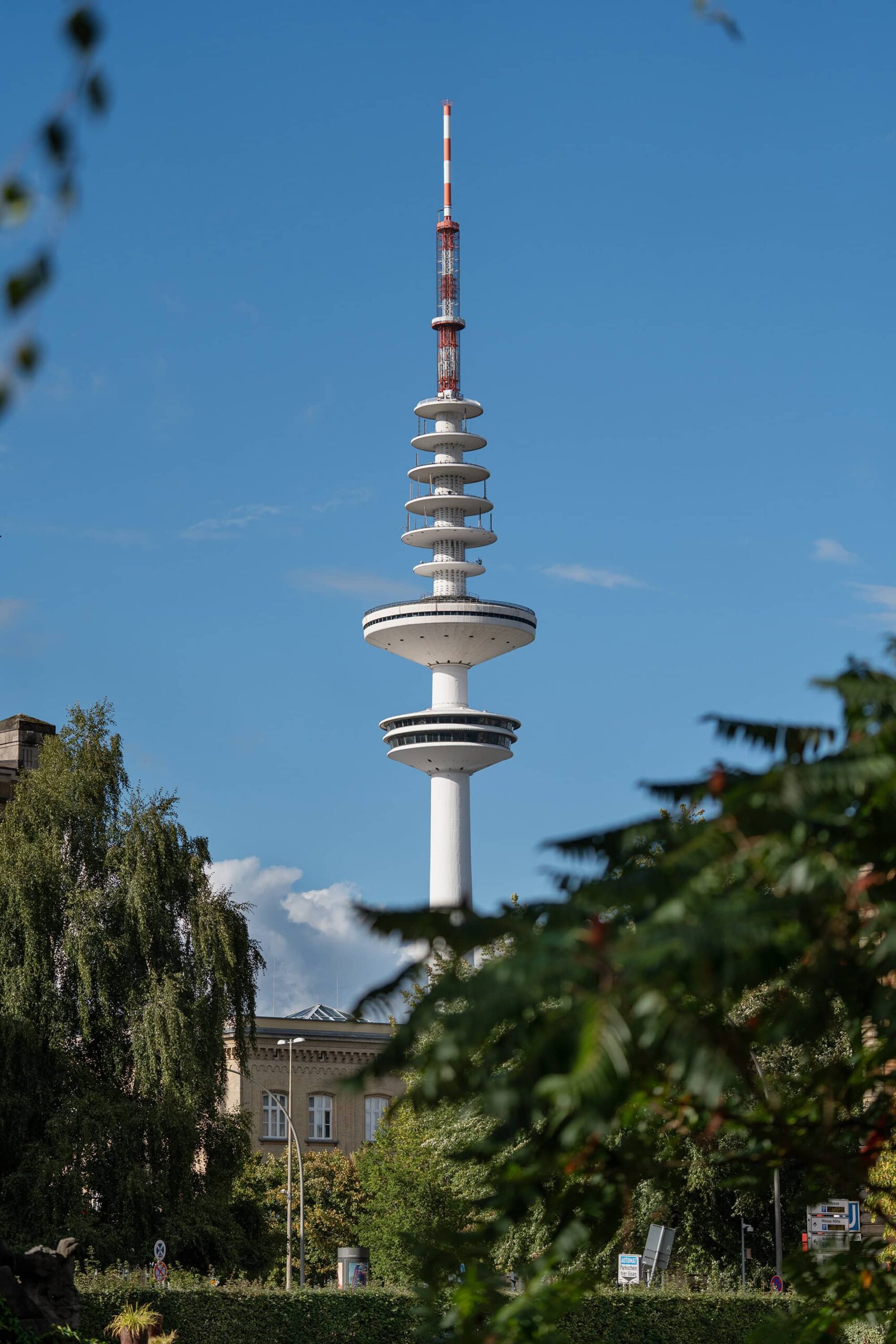
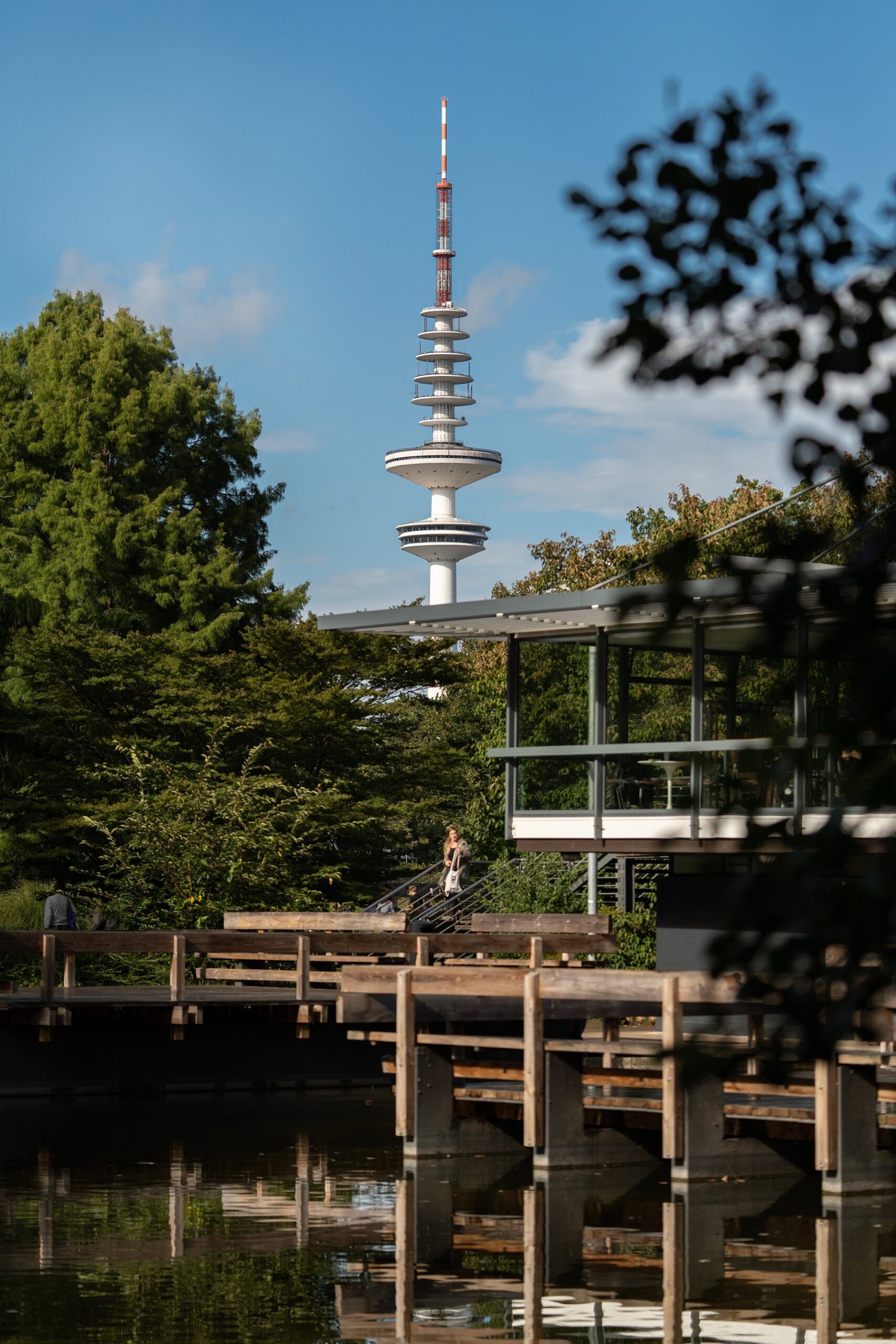
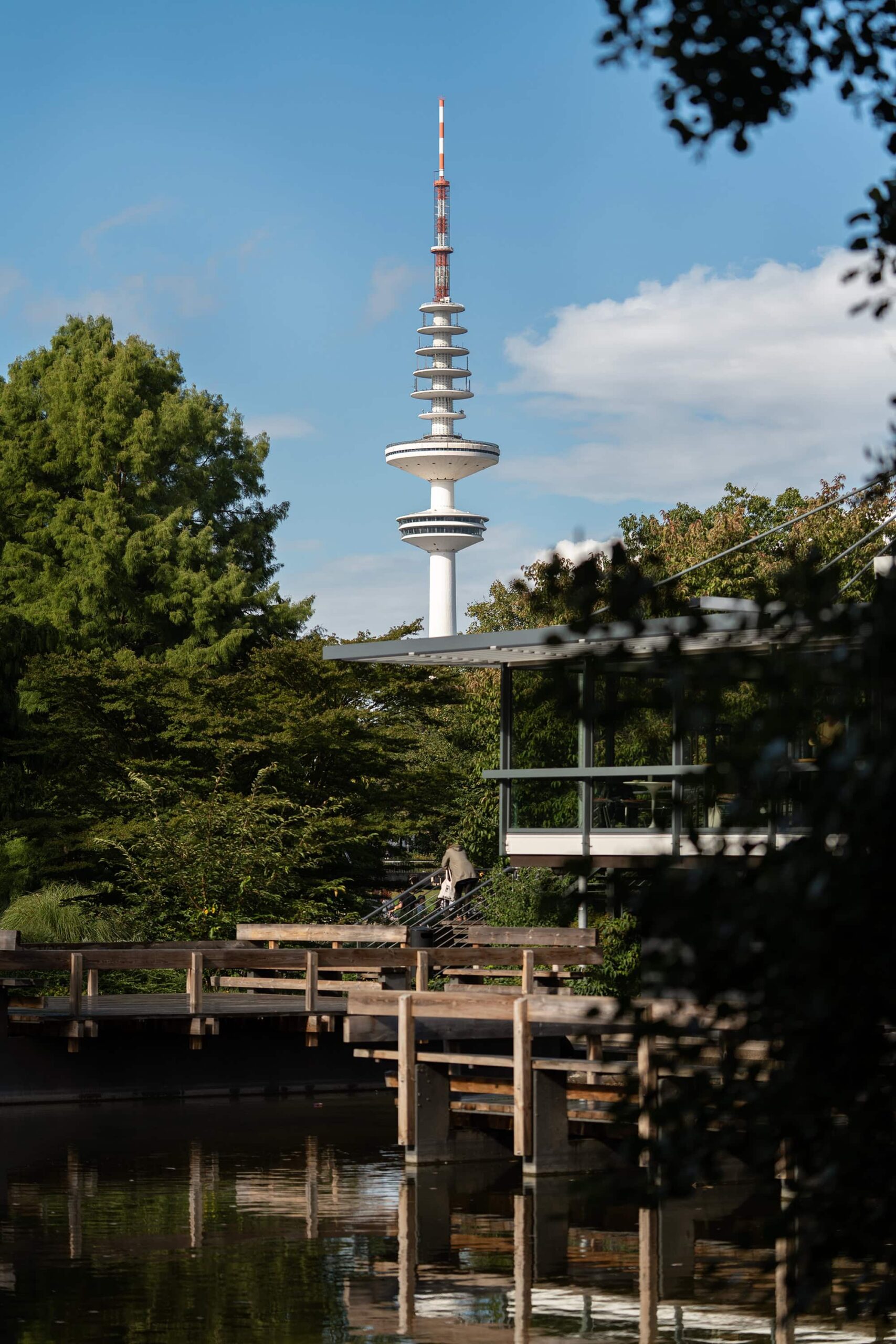
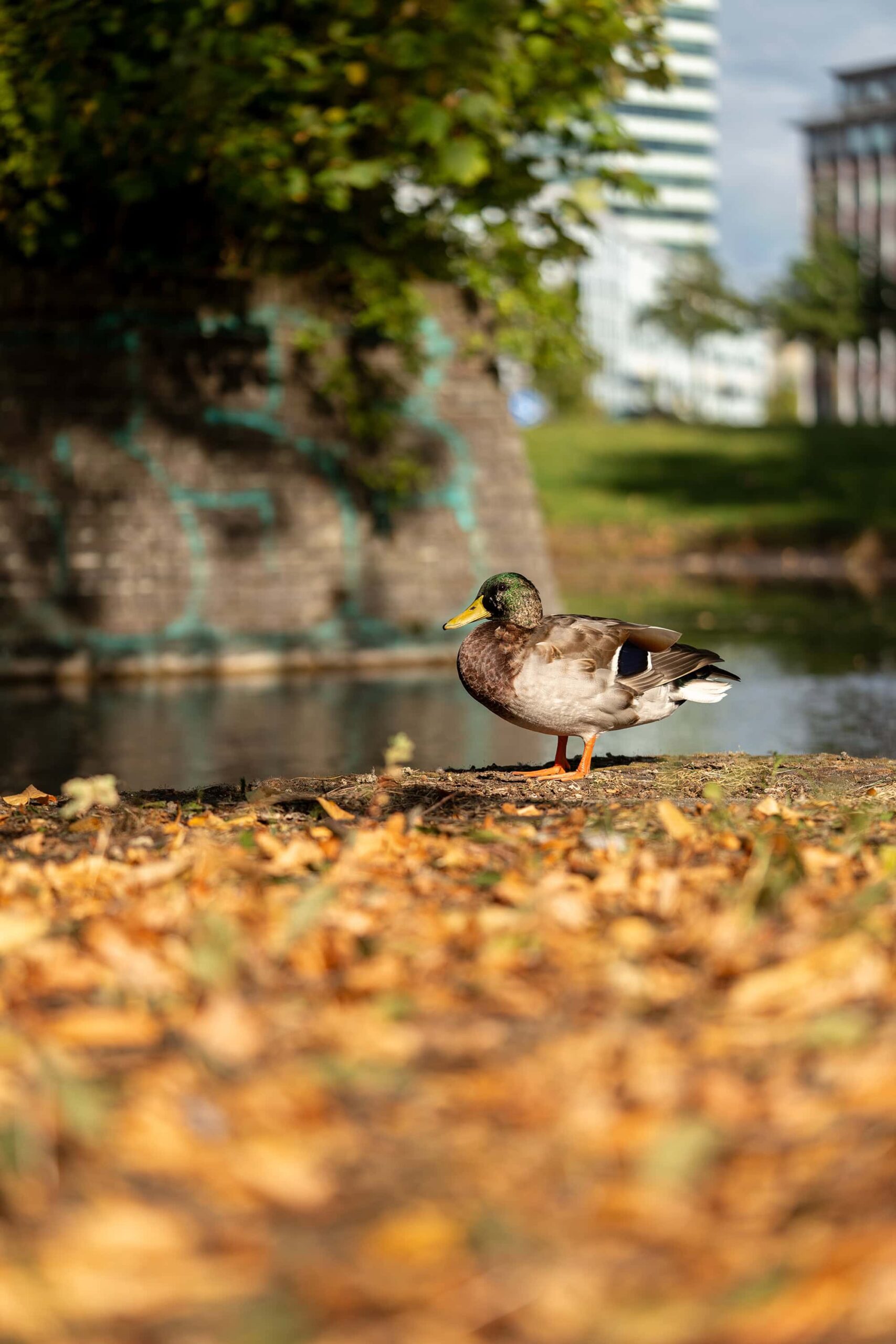

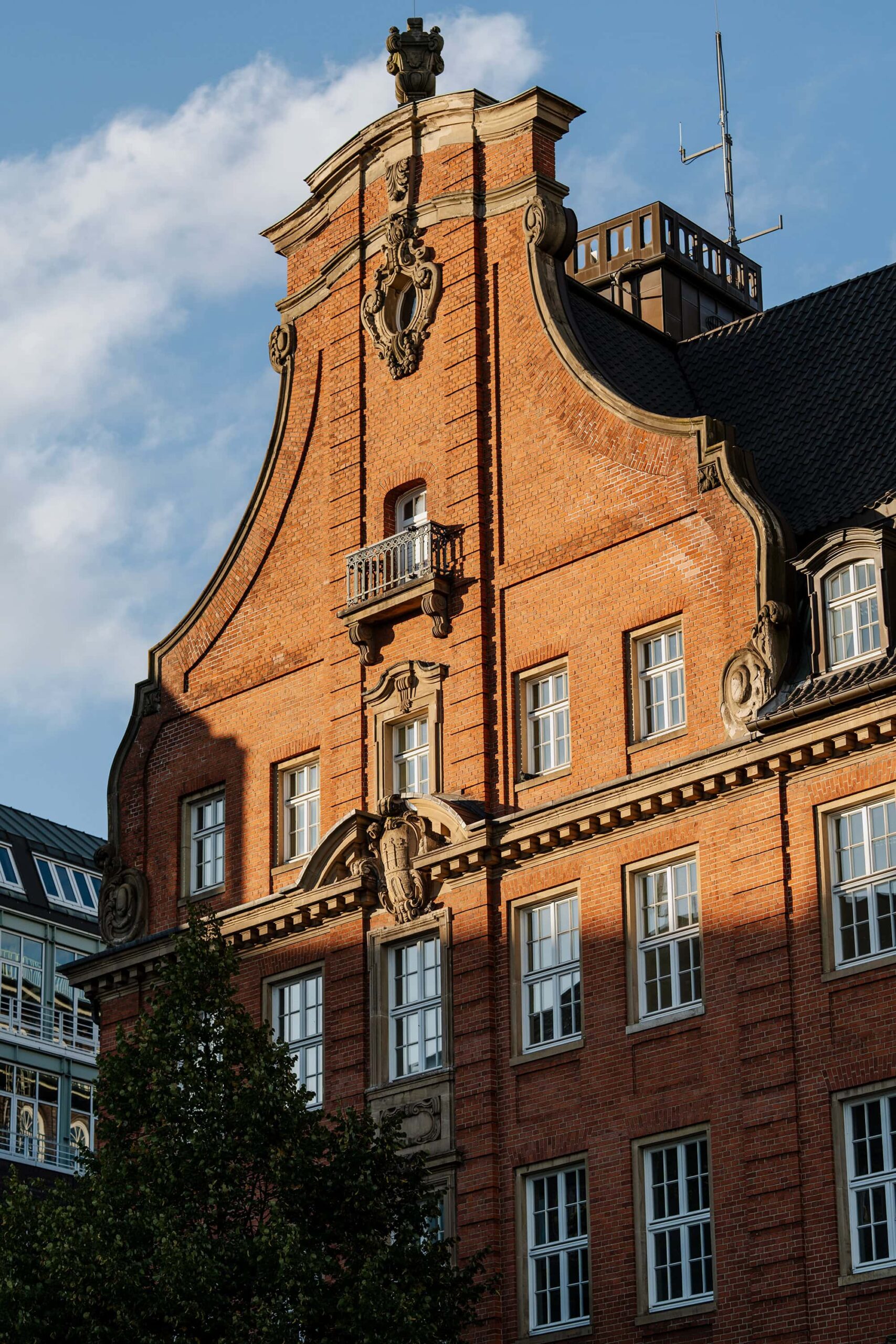






We use cookies to optimize your experience, analyze usage, and personalize content. Your continued browsing indicates consent to our cookie usage and the sharing of site interaction data with our marketing and analytics partners.